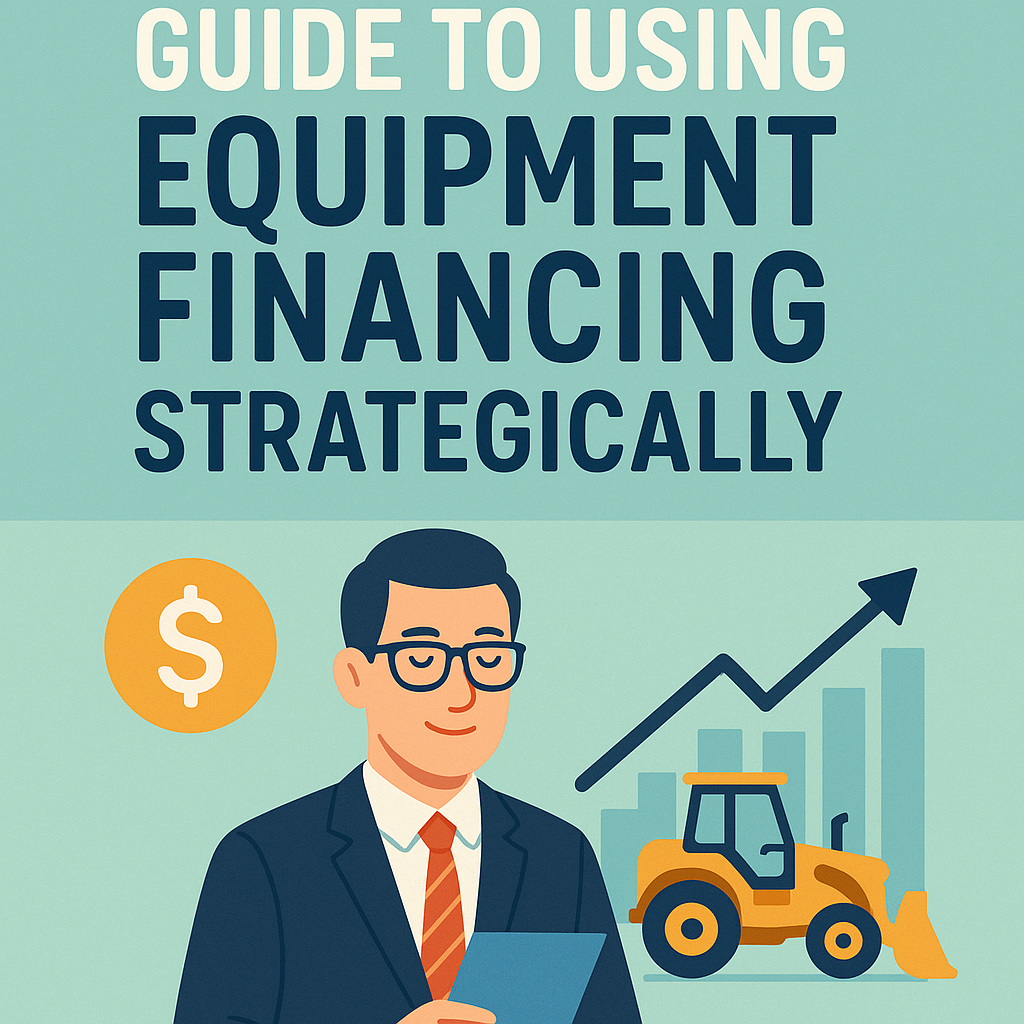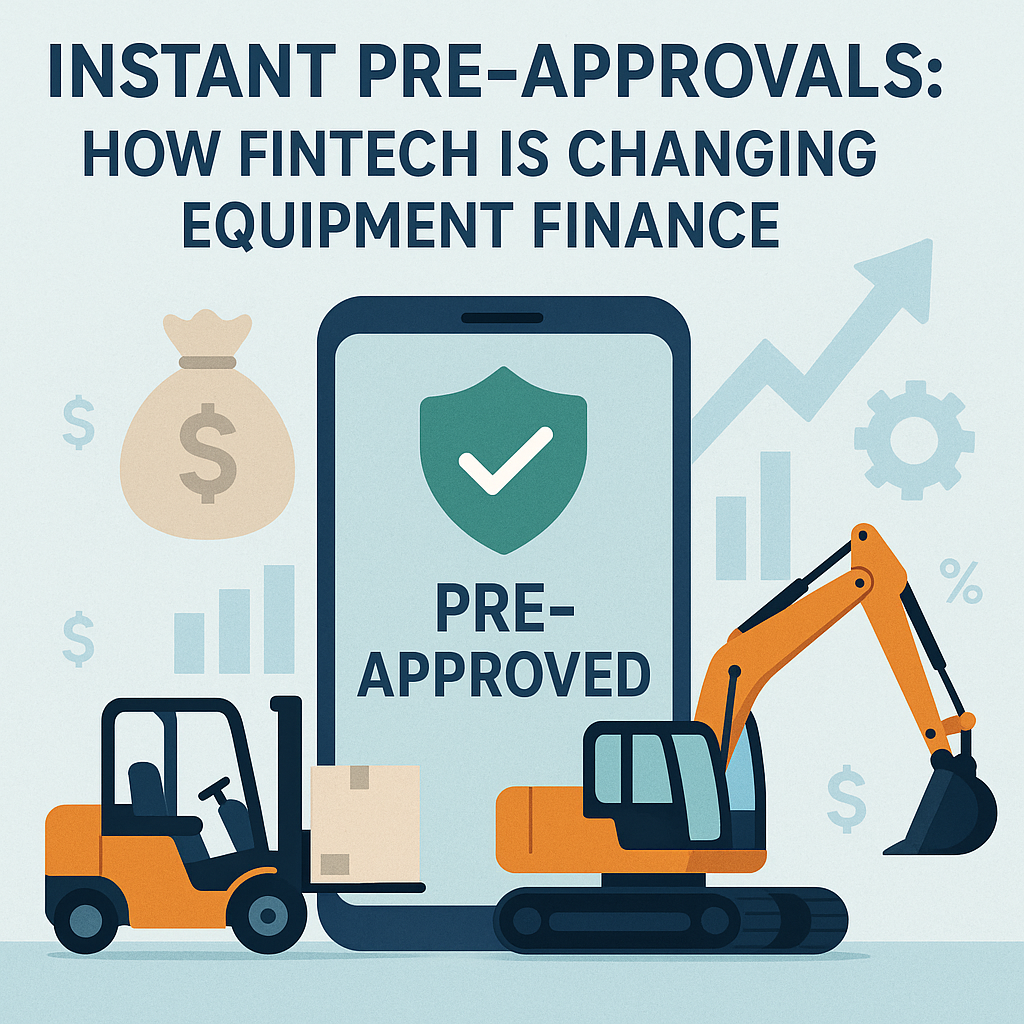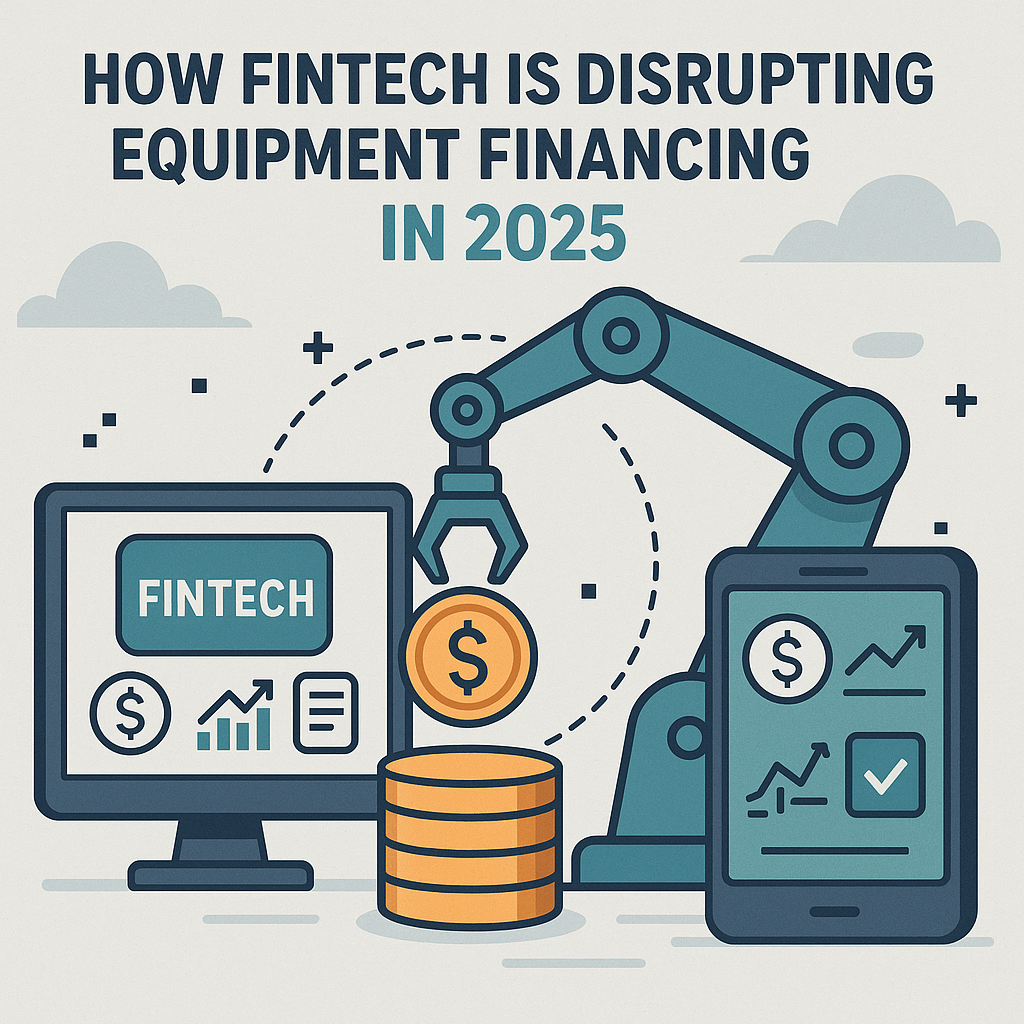🚀 How Equipment Financing Helps Preserve Cash Flow
💡 Why Equipment Financing is a Game-Changer
Starting or scaling a business? You already know that equipment—whether it’s laptops, heavy machinery, or delivery trucks—isn’t cheap. The bigger problem? Shelling out thousands upfront can drain your cash reserves, choke your growth, or delay operations.
Enter equipment financing—your business’s secret weapon to get the tools you need now, while keeping your cash where it belongs: in your business.
With flexible payment plans, low barriers to entry, and tailored options for startups, this financing method doesn’t just help you get ahead—it helps you stay there.
📘 What is Equipment Financing, Anyway?
Think of equipment financing like getting a business-friendly subscription to success.
You either:
- Lease the equipment (like renting a car), or
- Finance it with a loan (like a mortgage).
In both cases, you use the equipment right away, pay in smaller chunks over time, and avoid the cash crunch that comes from big upfront buys.
And here’s the best part: Many equipment financing companies for startups make it super easy with fast approvals, minimal paperwork, and startup-friendly terms.
🔥 How Equipment Financing Protects Your Cash Flow
Here’s how it keeps your business strong and financially healthy:
- No Giant Upfront Costs – You keep your cash for what really matters—marketing, payroll, or product development.
- Predictable Monthly Payments – No surprises. Budget like a boss.
- Better Liquidity – Handle emergencies and opportunities with confidence.
- Upgrade-Friendly – Need newer tech in 2 years? No problem.
- Preserves Working Capital – You stay agile, not cash-strapped.
Whether you’re a bakery looking for ovens or a tech startup needing servers, start up equipment financing is the smarter move.
🏆 Real Benefits for Startups (Yes, Yours Too)
If you’re wondering whether equipment financing for startups is the right fit, here’s what you get:
- Quick access to the equipment you need
- No equity dilution (so you keep full ownership of your business)
- Tax write-offs on interest or lease payments
- Credit-building opportunities as you make consistent payments
- Faster scaling with the right tools in hand
It’s like giving your business a superpower—without the side effects of overspending or overextending.
🔍 Leasing vs. Buying: Which One Helps More?
Not sure whether to lease or buy?
- Lease if you want flexibility, regular upgrades, and smaller payments.
- Buy if you need the equipment for years and want full ownership.
Leasing helps you avoid depreciation, frees up cash, and often comes with tax perks. Buying may suit long-term investments, especially if the asset retains value.
Either way, it’s about finding the option that keeps your cash flow smooth and your operations sharp.
💼 Who’s Using Equipment Financing? (Spoiler: Everyone)
Startups and established brands alike use financing in industries like:
- Construction – Think bulldozers and backhoes.
- Healthcare – Diagnostic tools, surgical equipment, and more.
- Tech – Computers, servers, and networking hardware.
- Logistics – Trucks, trailers, and GPS systems.
No matter your industry, securing equipment financing helps you compete without compromise.
🧭 The Ultimate Guide to Equipment Financing for Startups
Ready to take the plunge? Here’s how to do it right:
- Make a list of the gear you need
- Check your business credit (or personal credit if you’re a new founder)
- Get quotes from lenders or vendors
- Compare plans—rates, terms, and flexibility matter
- Apply and get funded—often within 24–72 hours
Pro tip: Use a digital equipment financing platform for a faster, smoother process—think e-signatures, instant approvals, and low-doc options.
❌ Busting the Biggest Myths of Equipment Financing
Let’s clear up a few things you might’ve heard:
- “It’s too expensive” → Actually, it saves money by keeping your cash liquid.
- “Only big companies qualify” → Nope. There are tons of options tailored for small businesses and startups.
- “It’s too much hassle” → Thanks to modern platforms, it’s easier than ever.
Don’t let outdated ideas stop you from making a smart move for your business.
📈 Real Stories, Real Results
Tech Startup Win
A SaaS company needed $45K in IT equipment to launch their platform. With equipment financing, they stayed lean, launched faster, and hit profitability in under 9 months.
Bakery Success Story
A local bakery used easy equipment financing to lease ovens and mixers. Instead of emptying savings, they doubled production and opened a second store within a year.
❓ Frequently Asked Questions (FAQs) – Equipment Financing & Cash Flow
Q1: Is equipment financing right for my startup?
Absolutely—equipment financing is especially beneficial for startups that want to conserve capital, grow quickly, and avoid giving up equity. Unlike venture capital, which often requires you to give away ownership in exchange for funds, equipment financing keeps you in control. It’s perfect if you’re looking to get the gear you need now, without maxing out credit cards or depleting your emergency reserves. Plus, it’s scalable—meaning you can finance more equipment as your business grows.
Q2: How fast can I get approved for equipment financing?
Approval times vary, but modern lenders—especially digital equipment financing platforms—often process applications within a few hours. In many cases, funds or equipment access can be available in just 1–3 business days. Traditional banks may take longer due to their stricter underwriting processes, but alternative lenders often specialize in speed and convenience, which is perfect for startups that need to move quickly to seize business opportunities.
Q3: Do I need excellent credit to qualify for equipment financing?
Not necessarily. While having a strong credit history can improve your chances and reduce interest rates, many lenders offer flexible terms for startups with average or limited credit. If your startup can show promising revenue, contracts, or a solid business plan, you may still qualify. Some lenders also look at the asset itself (the equipment) as collateral, which makes the loan less risky for them and more accessible for you.
Q4: Will I own the equipment at the end of the financing period?
Yes—if you opt for an equipment loan, you’ll own the equipment outright once the loan is fully paid off. If you choose a lease, ownership depends on the type of lease agreement. Operating leases generally let you return the equipment at the end of the term, while capital leases often give you the option to purchase it for a nominal amount. Always review the lease agreement carefully to understand your end-of-term options and obligations.
Q5: Can I deduct equipment financing payments from my taxes?
In most cases, yes. Lease payments are often fully deductible as operating expenses, which can lower your taxable income. If you’re using an equipment loan, the interest portion of your payment may be tax-deductible, and you may also benefit from depreciation deductions under tax codes like Section 179 in the U.S. However, tax laws can be complex and vary based on location, so it’s wise to consult with a tax professional to ensure you’re maximizing your deductions correctly.
Q6: What happens if I can’t make my equipment financing payments?
If you default on payments, the lender typically has the right to repossess the equipment, especially if it’s being used as collateral. However, most reputable lenders are willing to work with you before it reaches that stage. They may offer options like payment restructuring, deferment, or temporary relief programs. It’s always better to communicate early if you’re facing financial difficulties—being proactive can help preserve your relationship with the lender and protect your business assets.
💬 Final Thoughts: Ready to Grow Without the Cash Crunch?
Here’s the truth: If you’re bootstrapping or building a business from the ground up, cash is king. But that doesn’t mean you should stall your growth or settle for less.
With smart, flexible, and accessible options, equipment financing is one of the best-kept secrets in business today.
Whether you’re a first-time founder or scaling your second startup, it’s time to preserve your cash flow, protect your momentum, and invest wisely in your future.





No comment